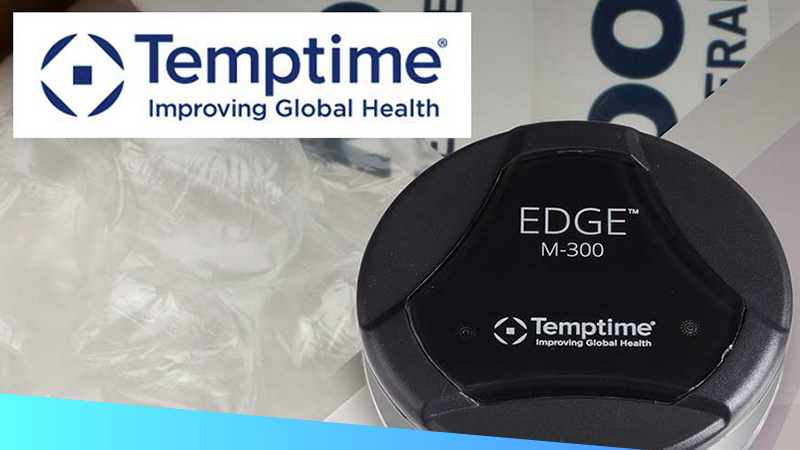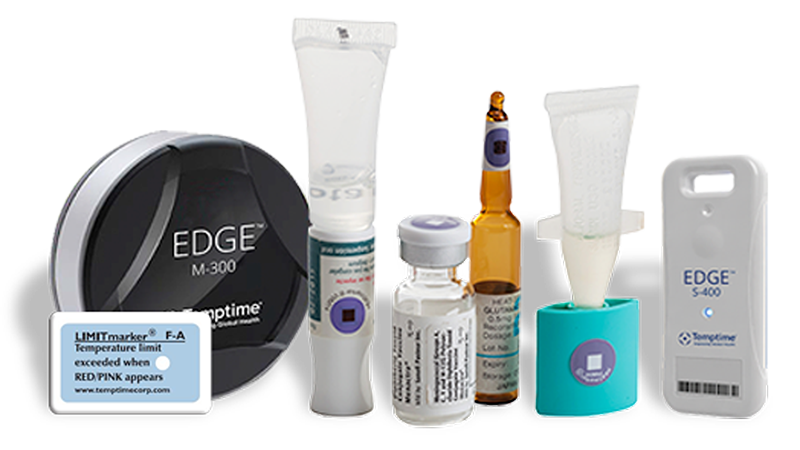Transform retail operations with Zebra’s retail technology solutions, featuring hardware and software for improving inventory management and empowering teams.
Streamline operations with Zebra’s healthcare technology solutions, featuring hardware and software to improve staff collaboration and optimise workflows.
Enhance processes with Zebra’s manufacturing technology solutions, featuring hardware and software for automation, data analysis, and factory connectivity.
Zebra’s transportation and logistics technology solutions feature hardware and software for enhancing route planning, visibility, and automating processes.
Zebra's public sector technology solutions enhance decision-making, streamline operations, and safeguard communities with advanced software and rugged hardware.
Zebra's hospitality technology solutions equip your hotel and restaurant staff to deliver superior customer and guest service through inventory tracking and more.
Zebra's market-leading solutions and products improve customer satisfaction with a lower cost per interaction by keeping service representatives connected with colleagues, customers, management and the tools they use to satisfy customers across the supply chain.
Empower your field workers with purpose-driven mobile technology solutions to help them capture and share critical data in any environment.
Zebra's range of mobile computers equip your workforce with the devices they need from handhelds and tablets to wearables and vehicle-mounted computers.
Zebra's desktop, mobile, industrial, and portable printers for barcode labels, receipts, RFID tags and cards give you smarter ways to track and manage assets.
Zebra's 1D and 2D corded and cordless barcode scanners anticipate any scanning challenge in a variety of environments, whether retail, healthcare, T&L or manufacturing.
Zebra's extensive range of RAIN RFID readers, antennas, and printers give you consistent and accurate tracking.
Choose Zebra's reliable barcode, RFID and card supplies carefully selected to ensure high performance, print quality, durability and readability.
Zebra's rugged tablets and 2-in-1 laptops are thin and lightweight, yet rugged to work wherever you do on familiar and easy-to-use Windows or Android OS.
With Zebra's family of fixed industrial scanners and machine vision technologies, you can tailor your solutions to your environment and applications.
Zebra’s line of kiosks can meet any self-service or digital signage need, from checking prices and stock on an in-aisle store kiosk to fully-featured kiosks that can be deployed on the wall, counter, desktop or floor in a retail store, hotel, airport check-in gate, physician’s office, local government office and more.
Adapt to market shifts, enhance worker productivity and secure long-term growth with AMRs. Deploy, redeploy and optimize autonomous mobile robots with ease.
Discover Zebra’s range of accessories from chargers, communication cables to cases to help you customise your mobile device for optimal efficiency.
Zebra's environmental sensors monitor temperature-sensitive products, offering data insights on environmental conditions across industry applications.
Zebra's location technologies provide real-time tracking for your organisation to better manage and optimise your critical assets and create more efficient workflows.
Enhance frontline operations with Zebra’s AI software solutions, which optimize workflows, streamline processes, and simplify tasks for improved business outcomes.
Empower your frontline with Zebra Companion AI, offering instant, tailored insights and support to streamline operations and enhance productivity.
The everything you need to rapidly and cost effectively develop high-performance AI vision applications on Zebra mobile computers.
Zebra Workcloud, enterprise software solutions boost efficiency, cut costs, improve inventory management, simplify communication and optimize resources.
Keep labour costs low, your talent happy and your organisation compliant. Create an agile operation that can navigate unexpected schedule changes and customer demand to drive sales, satisfy customers and improve your bottom line.
Drive successful enterprise collaboration with prioritized task notifications and improved communication capabilities for easier team collaboration.
Get full visibility of your inventory and automatically pinpoint leaks across all channels.
Reduce uncertainty when you anticipate market volatility. Predict, plan and stay agile to align inventory with shifting demand.
Drive down costs while driving up employee, security, and network performance with software designed to enhance Zebra's wireless infrastructure and mobile solutions.
Explore Zebra’s printer software to integrate, manage and monitor printers easily, maximising IT resources and minimising down time.
Make the most of every stage of your scanning journey from deployment to optimisation. Zebra's barcode scanner software lets you keep devices current and adapt them to your business needs for a stronger ROI across the full lifecycle.
RFID development, demonstration and production software and utilities help you build and manage your RFID deployments more efficiently.
RFID development, demonstration and production software and utilities help you build and manage your RFID deployments more efficiently.
Zebra DNA is the industry’s broadest suite of enterprise software that delivers an ideal experience for all during the entire lifetime of every Zebra device.
Advance your digital transformation and execute your strategic plans with the help of the right location and tracking technology.
Boost warehouse and manufacturing operations with Symmetry, an AMR software for fleet management of Autonomous Mobile Robots and streamlined automation workflows.
The Zebra Aurora suite of machine vision software enables users to solve their track-and-trace, vision inspection and industrial automation needs.
Zebra Aurora Focus brings a new level of simplicity to controlling enterprise-wide manufacturing and logistics automation solutions. With this powerful interface, it’s easy to set up, deploy and run Zebra’s Fixed Industrial Scanners and Machine Vision Smart Cameras, eliminating the need for different tools and reducing training and deployment time.
Aurora Imaging Library™, formerly Matrox Imaging Library, machine-vision software development kit (SDK) has a deep collection of tools for image capture, processing, analysis, annotation, display, and archiving. Code-level customisation starts here.
Aurora Design Assistant™, formerly Matrox Design Assistant, integrated development environment (IDE) is a flowchart-based platform for building machine vision applications, with templates to speed up development and bring solutions online quicker.
Designed for experienced programmers proficient in vision applications, Aurora Vision Library provides the same sophisticated functionality as our Aurora Vision Studio software but presented in programming language.
Aurora Vision Studio, an image processing software for machine & computer vision engineers, allows quick creation, integration & monitoring of powerful OEM vision applications.
Adding innovative tech is critical to your success, but it can be complex and disruptive. Professional Services help you accelerate adoption, and maximise productivity without affecting your workflows, business processes and finances.
Zebra's Managed Service delivers worry-free device management to ensure ultimate uptime for your Zebra Mobile Computers and Printers via dedicated experts.
Find ways you can contact Zebra Technologies’ Support, including Email and Chat, ask a technical question or initiate a Repair Request.
Zebra's Circular Economy Program helps you manage today’s challenges and plan for tomorrow with smart solutions that are good for your budget and the environment.

Temperature-Sensing Label Solutions Can Improve Consumer Safety
On the surface, the healthcare market may not seem to have much in common with the other vertical markets that Zebra serves, but it does. They all operate “on-demand” business models. They all rely on global supply chain organizations in some capacity to fulfill their missions. And they are all expected to deliver quality goods and services to consumers. As such, they are equally accountable to prioritize consumer safety.
For example, healthcare organizations must have a way to confirm that the vaccines, blood bags and pharmaceutical products used in the course of preventative, acute and non-acute patient care have been properly transported and stored. In the retail and transportation and logistics (T&L) space, those responsible for the transport and handling of perishable foods must take measures to prevent spoilage as they move from the manufacturer to the final retail distribution point. They are all searching for better ways to identify potential quality degradation in time and temperature-sensitive products before they reach consumers.
In other words, the healthcare, T&L and retail sectors could equally benefit from the unique asset monitoring and quality alert capabilities of temperature-sensing technologies. So too can those who are involved in the production and storage of both raw materials and finished goods. That is one of the reasons why Zebra recently acquired Temptime. We want to go deeper in our ability to serve our healthcare customers, and we want to expand the applicability of our global supplies portfolio across the other verticals that we serve.
Bringing the Supplies Strategy to Life with Temptime Capabilities
Zebra’s global supplies portfolio started with barcode labels and ribbons and eventually expanded into wristbands, including LaserBands, and our current card offering. The next strategic step for the business was to move into functional labels that offer sensing and authentication capabilities. The addition of the Temptime portfolio has moved us firmly into “functional” supplies as we now can sense, track and trace assets while maintaining high internal quality control and compliance with government regulations. This also helps us advance our Enterprise Asset Intelligence (EAI) vision to customers’ benefit. We can leverage Zebra’s scanning, mobile computing, printing and Zebra Savanna™ capabilities to increase the impact of customers’ investment as we bring new supplies and data-driven visibility solutions to market. For example, the increase in food and pharmaceutical recalls in recent years has raised global awareness about the very real challenges of maintaining product temperature ranges during the production, handling and administration of certain “cold chain” goods. Fast action must be taken to improve visibility and mitigate quality issues, and the temperature-sensitive products that Zebra is now integrating into its global supplies portfolio will give customers the opportunity to do just that.

The Investment in Temperature-Sensing Labels Makes Sense for Zebra…
This year you will start to see our research and development teams advance the barcode label capabilities with Temptime’s impressive sensing portfolio. We are exploring ways to embed this temperature-sensitive label technology onto the same label that customers already use for other inventory management efforts. These integrated labels, printed on Zebra printers, will remain readable by the same Zebra mobile computers and scanners used today for other applications. In other words, our goal is not to create a rip-and-replace scenario. Rather, we want to deliver even more value – and help customers secure an even greater return – for the technologies used broadly today.
But we want to do more than just advance the time and temperature-sensing technology to a digitally-integrated state. We want to ensure it is readily accessible to those who are responsible for consumer and patient safety.
Together, Zebra and Temptime will have the resources to deliver this game-changing technology to organizations serving both urban and rural communities worldwide. We want to help customers minimize consumer safety risks that have historically emerged in the handling of cold chain products. Our team will advise on application strategies that maximize the technology’s monitoring and control capabilities in combination with other mobile computing, scanning, printing and EAI solutions. And we will collaborate with all stakeholders to ensure successful technology integrations across diverse supply chain structures. At the end of the day, Zebra wants customers to feel confident in their ability to exceed quality expectations, whether they play a role in providing life-saving healthcare or life-enriching retail offerings. By acquiring Temptime, we are better positioned to help customers protect their customers.
That’s Why an Investment in Temperature-Sensing Technologies Makes Even More Sense for Zebra’s Customers…
Today, the Temptime portfolio of temperature-monitoring labels and devices provides a visual alert to healthcare workers whether a vaccine has been exposed to potentially damaging temperatures even in the most remote locations. In addition, customers like pharmaceutical corporations, biotechnology companies and hospitals are using Temptime devices and labels to help improve the storage and handling of medical products.
However, customers who opt to use the Temptime smart labels in combination with Zebra mobile computers, scanners, printers and the data-driven Savanna platform will be able to track and trace inventory using an additional safety-focused lens.
For example, workers equipped with Zebra mobile computers or rugged tablets can be alerted to potential safety issues while time and temperature-sensitive products are in transit. This will enable fast corrective action to avert a crisis and maintain compliance with regulations without sacrificing production or distribution speed, which is demanded in the current “now economy.”
In turn, even more global healthcare workers will receive the guidance they need to make informed decisions about the use of time and temperature-sensitive products in critical care situations. At the same time, global manufacturing, warehousing, transportation, logistics and retail organizations will have the insight and tools needed to proactively enhance food safety efforts. In short, we at Zebra view our investment in Temptime and our global supplies business as a win-win for our customers and their customers.
Editor's Note: Stay updated about the progress of the Temptime integration and Zebra’s global supplies portfolio growth. Subscribe to the Your Edge blog or sign up for Zebra newsletters now.

Tony Cecchin
Tony Cecchin leads Zebra’s Global Supplies organization which includes barcode labels, wristbands, RFID medio, etc, as Vice President and General Manager. Tony also serves as President of Temptime which was acquired by Zebra in February 2019. Temptime is a leading manufacturer of temperature sensing labels and monitoring solutions.
Tony is responsible for all aspects of the businesses including strategy, portfolio management, manufacturing and research and development. His passion and energy have enabled a transformation of the traditional Supplies business to include a new category of intelligent supplies. Tony began his career over 30 years ago with Motorola where he led various organizations globally. His deep experience in product management, international business, joint ventures and strategy defined a proven track record of success. Tony recently served as Vice President, Portfolio Management for Zebra’s services organization managing the support and managed services portfolio.
Tony holds a BA and MBA from Loyola University of Chicago and has been awarded three United States patents.
Zebra Developer Blog
Zebra Developer BlogZebra Developer Blog
Are you a Zebra Developer? Find more technical discussions on our Developer Portal blog.
Zebra Story Hub
Zebra Story HubZebra Story Hub
Looking for more expert insights? Visit the Zebra Story Hub for more interviews, news, and industry trend analysis.
Search the Blog
Search the BlogSearch the Blog
Use the below link to search all of our blog posts.
Most Recent
Legal Terms of Use Privacy Policy Supply Chain Transparency
ZEBRA and the stylized Zebra head are trademarks of Zebra Technologies Corp., registered in many jurisdictions worldwide. All other trademarks are the property of their respective owners. Note: Some content or images on zebra.com may have been generated in whole or in part by AI. ©2025 Zebra Technologies Corp. and/or its affiliates.




